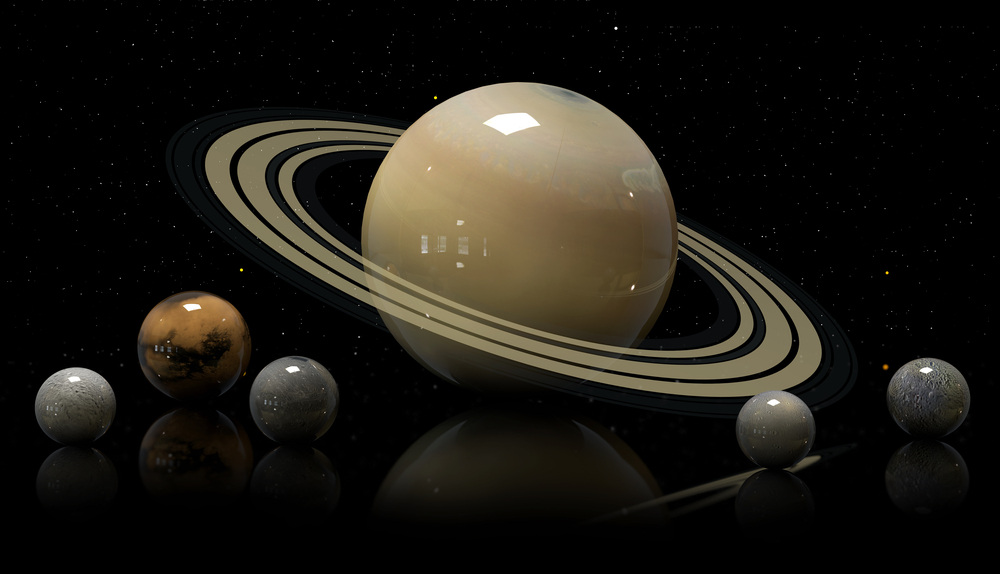
Freshly harvested data from NASA’s Cassini mission reveals that the ringed planet’s moons may be younger than previously thought.
“All of these Cassini mission measurements are changing our view of the Saturnian system, as it turns our old theories upside down,” said Radwan Tajeddine, Cornell University research associate in astronomy and a member of the European-based Encelade scientific team that pored over the Cassini data and published a paper in the astronomy journal Icarus (January 2017).
The Encelade team – lead by Valéry Lainey of the Paris Observatory – provided two key measurements in the research: the rigidity of the tidal bulge, or the Love number – named for Augustus E.H. Love, a famed British mathematician who studied elasticity – and the dissipation factor, which controls the speed at which moons move away.
While Saturn is mostly a gigantic shroud of liquid hydrogen and liquid helium, it contains a rocky core – about 18 times the size of Earth, which responds to tidal forces from all of Saturn’s major moons by bulging. The forces of the bulging core, in turn, push the moons slightly away.
“Those two parameters – the Love number and dissipation factor – are difficult to separate,” Tajeddine said.
So the team detected and examined the orbits of four tiny moons associated with the larger moons Tethys (Telesto and Calypso) and Dione (Helene and Polydeuces). While these tiny moons do not affect the tidal forces on Saturn, their orbits are disturbed by Saturn’s core tidal bulges.
“By monitoring these disturbances, we managed to obtain the first measurement of Saturn’s Love number and distinguish it from the planet’s dissipation factor,” Tajeddine said. “The moons are migrating away much faster than expected.”
Tajeddine explains that if Saturn moons actually formed 4.5 billion years ago, their current distances from the home planet should be greater. Thus, this new research suggests, the moons are younger than 4.5 billion years, favoring a theory that the moons formed from Saturn’s rings.
The team also found that Saturn moon Rhea is moving away 10 times faster than the other moons, which is the first evidence that a planet’s dissipation factor can vary with its distance in relation to the moon. The scientists have no definitive explanation.
“What we believe about Saturn’s moons history might still change in the coming years with the finale of the Cassini mission,” said Lainey, who suggested, “The more we learn about Saturn, the more we learn about exoplanets.”




